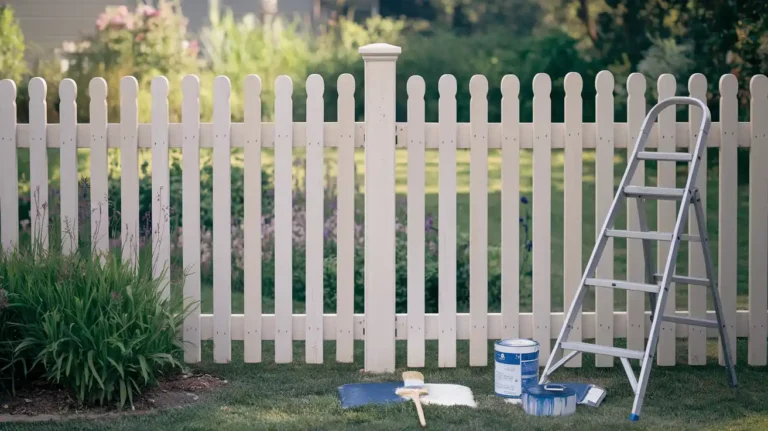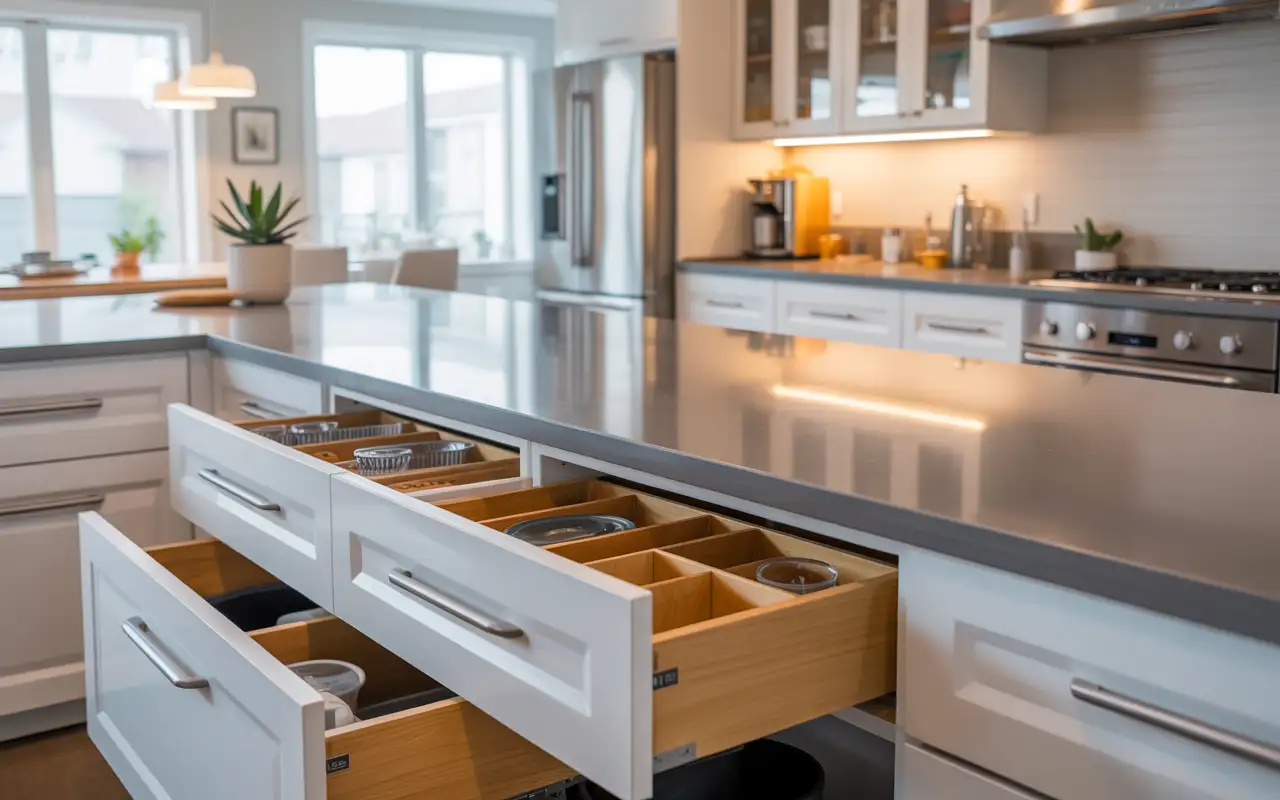Can you paint pressure treated wood? The direct answer is yes, absolutely, but only if you follow a crucial rule: patience. Applying paint to new pressure-treated lumber before it is properly dried, or “cured,” will guarantee the paint fails, resulting in peeling, bubbling, and a wasted effort. This expert guide will give you the precise timing, products, and steps used by professionals to ensure your finished project looks amazing and lasts for years.
The key to a successful project is understanding the science behind the wood and using materials that work with, not against, its unique composition. We will focus on showing deep expertise through specific technical details and providing a simple, trustworthy roadmap.
Table of Contents
What Is Pressure Treated Wood?

Pressure-treated wood is standard lumber, usually southern yellow pine, that has been saturated with chemical preservatives, such as copper azole. This process, known as pressure treatment, forces the chemicals deep into the wood fibers using high pressure in a sealed chamber.
Benefits of Pressure Treated Wood
- Resistance: It’s primarily used for outdoor projects like decks, fences, and porches because it resists rot, decay, fungus, and termites.
- Cost and Durability: While slightly more expensive than untreated wood, its enhanced durability and resistance mean it lasts significantly longer, making it a more cost-effective choice for exterior structures.
The Role of Finishing
While the treatment protects the wood from biological threats, it does not protect the wood surface from the environment. Painting or staining pressure treated wood adds a critical layer of defense against two major enemies:
- Water: Prevents the wood from soaking up rain and expanding/contracting.
- Ultraviolet (UV) Light: Protects the wood from the sun’s rays, which cause it to turn gray and splinter over time.
Why Should You Wait Till Your Wood is Dry Before You Paint it?
Fresh pressure treated lumber arrives soaking wet from the treatment process. The moisture content sits between 40% and 60%. Paint needs wood below 14% moisture to stick properly.
Paint over wet wood and three things happen:
- The paint film traps moisture inside, stopping the wood from breathing
- Chemicals seeping out push the paint away from the surface
- Water under the paint creates blisters that pop and peel
I tested this myself on a fence section. Painted half after 2 weeks, waited 4 months for the other half. The rushed section started peeling in 6 weeks. The patient section? Still perfect after 3 years.
How Long Does Drying Actually Take?
Drying time depends on your location and weather:
- Hot, Dry Climates (Arizona, New Mexico) – 6 to 8 weeks minimum. Low humidity speeds everything up.
- Moderate Climates (California, Texas) – 3 to 4 months typical. Watch for rain that resets the clock.
- Humid Climates (Florida, Louisiana) – 4 to 6 months required. High humidity slows evaporation dramatically.
- Cold Climates (Minnesota, Maine) – Wait until spring. Cold weather pauses drying completely.
The Water Bead Test
This simple test tells you if wood is ready:
- Sprinkle water drops on the wood surface. Watch what happens in the first 5 seconds.
- Water beads up – Too wet. The wood is still saturated. Wait another 2 to 4 weeks.
- Water soaks in – Ready to paint. Moisture content is low enough for treatment.
- Test multiple boards in different spots. Shaded areas dry slower than sunny spots.
Kiln Dried After Treatment (KDAT)
Want to skip the waiting? Buy KDAT lumber. It costs 20% to 30% more but you can paint it within days.
The supplier kiln-dries the wood after chemical treatment. Moisture content drops to 14% or below at the mill. Look for the KDAT stamp on the board.
Home Depot and Lowe’s stock KDAT in limited quantities. Specialty lumber yards carry more options. Expect to pay $10 to $15 per 2x4x8 board instead of $8 to $12.
Proper Storage While Drying
Stack your lumber right to prevent warping:
- Place thin wood strips (stickers) between each board. Space them 16 to 24 inches apart. This creates air gaps for circulation.
- Keep the stack off the ground on concrete blocks or pallets. Ground contact adds moisture and invites rot.
- Store in a covered area with good airflow. A carport works great. Avoid plastic tarps that trap moisture.
- Weight the top with concrete blocks or scrap lumber. This keeps boards flat as they dry.
Before You Paint, Make Sure Your Treated Wood is Clean
Dried pressure treated wood collects dirt, pollen, and chemical residue on the surface. These contaminants stop paint from bonding. A thorough cleaning makes all the difference.
What You Need
- Garden hose with spray nozzle
- Stiff-bristled deck brush
- Bucket with mild detergent (dish soap works)
- TSP (trisodium phosphate) for stubborn stains
- Safety glasses and rubber gloves
Skip the pressure washer. The high pressure gouges the wood and pushes water deep into the grain. Stick with hand scrubbing and a regular hose.
The Cleaning Process
Step 1: Wet down the entire surface with your hose. This loosens surface dirt and prepares the wood.
Step 2: Mix 1 cup of detergent per gallon of water. For mildew or green stains, add 1/4 cup TSP to the mix.
Step 3: Scrub in sections with your deck brush. Work with the wood grain, not against it. Apply firm pressure.
Step 4: Let the soap sit for 5 to 10 minutes. This breaks down oils and chemical residue.
Step 5: Rinse thoroughly with clean water. Make sure no soap remains. Soap under paint causes adhesion problems.
Step 6: Allow 48 hours of dry time before priming. Check weather forecasts to avoid rain.
Dealing With Mildew
See black or green spots? That’s mildew. It grows on any damp surface, even pressure treated wood.
Mix 1 part bleach to 3 parts water. Spray on affected areas. Wait 10 minutes, scrub, then rinse well. The bleach kills mildew spores that paint would seal in.
Wear old clothes. Bleach solution splashes and stains everything it touches.
How to Paint Pressure Treated Wood: Step-by-Step Guide

Now comes the actual painting. Follow these steps exactly for a finish that lasts.
Materials and Tools Needed
Paint Supplies:
- High quality exterior latex primer ($30-$40 per gallon)
- Exterior latex paint ($35-$50 per gallon)
- Paint roller with 3/8-inch nap
- 2.5-inch angled brush
- Paint tray and liners
- Extension pole for rollers
Prep Supplies:
- Painter’s tape
- Drop cloths or plastic sheeting
- Sandpaper (120-grit)
- Tack cloth
- Stir sticks
Step 1: Fix Surface Issues
Walk the entire surface looking for problems. Hammer down any raised nails. Fill large cracks or holes with exterior wood filler. Let the filler dry 24 hours.
Sand rough spots with 120-grit sandpaper. Don’t over-sand. You just want a smooth surface, not bare wood. Wipe away dust with a tack cloth.
Step 2: Protect Surrounding Areas
Cover plants, grass, and concrete with drop cloths. Tape off house siding, windows, and door frames. Mask light fixtures and outlets.
This prep takes 30 minutes but saves hours of cleanup. Paint splatters travel farther than you think.
Step 3: Apply Exterior Primer
Use a latex primer made specifically for pressure treated wood. Oil-based primers don’t flex with wood movement and crack faster.
Best Primers for Treated Wood:
- KILZ Exterior (about $32/gallon) – Blocks tannins and chemicals
- Zinsser Bulls Eye 1-2-3 ($35/gallon) – Fast drying, excellent adhesion
- Behr Premium Plus ($30/gallon) – Budget-friendly, solid performance
Start with your angled brush. Cut in around edges, corners, and tight spots. This takes precision a roller can’t match.
Switch to your roller for large flat areas. Roll in long, even strokes. Overlap each pass by 2 inches. Maintain a wet edge to avoid lap marks.
One coat of primer is enough. Let it dry for 6 to 8 hours. Check the can for exact timing.
Step 4: Choose Your Paint Type
Always use exterior latex paint on treated lumber. Oil-based paints crack and peel on wood that expands and contracts with weather. Latex flexes with the wood.
Top-Rated Exterior Latex Paints:
- Sherwin-Williams Duration ($75/gallon) – Lasts 10+ years, self-priming
- Benjamin Moore Aura ($80/gallon) – Best color retention
- Behr Marquee ($50/gallon) – Great value, one-coat coverage
- PPG Timeless ($60/gallon) – Excellent mildew resistance
For horizontal surfaces like deck floors, use porch and floor enamel. Regular wall paint gets slippery when wet and wears through quickly. Porch paint costs $45 to $70 per gallon but handles foot traffic.
Step 5: Apply First Coat
Use the same brush-then-roll technique as primer. Paint in sections, completing each before moving on. This prevents lap marks from paint drying at different times.
Work during mild weather. Temperature between 50°F and 85°F is ideal. Avoid painting in direct sunlight or high humidity. Both mess with drying times and final appearance.
Let the first coat dry for 4 to 6 hours. Touch it lightly. If paint transfers to your finger, wait longer.
Step 6: Apply Second Coat
Most projects need two coats for full coverage. The second coat hides any thin spots and increases durability.
Check your first coat in direct sunlight. See any wood showing through? That spot needs extra attention on the second pass.
Use the same application method. Brush edges first, roll the rest. Keep a wet edge. Don’t rush.
Step 7: Finishing Touches
After the final coat dries (usually 24 hours), remove painter’s tape slowly at a 45-degree angle. This prevents pulling up paint edges.
Inspect for missed spots or drips. Touch up with a small brush if needed.
Wait 3 days before replacing furniture or using the surface heavily. Paint might feel dry but needs time to cure fully.
Should You Paint or Stain Pressure Treated Lumber?

Both paint and stain work on treated wood. Your choice depends on the look you want and maintenance you’ll accept.
When Paint Makes Sense
Choose paint when:
- You want solid color coverage
- The structure needs to match your house color
- You plan to repaint every 7 to 10 years
- You want maximum UV protection
- Hiding wood grain is fine
Paint creates a thick protective barrier. It blocks all UV rays that fade and damage wood. Colors stay vibrant longer than stains.
The downside? Paint eventually peels. When it does, you must scrape and repaint. Spot repairs show unless you redo entire sections.
When Stain Works Better
Choose stain when:
- You like the natural wood look
- Easy maintenance matters
- The wood develops minor damage (stain hides scratches)
- You want to recoat every 2 to 3 years
- Budget is tight (stain costs less)
Stain penetrates wood instead of sitting on top. It won’t peel or bubble like paint. When it fades, just clean and add another coat. No scraping required.
Stain offers less protection than paint. UV rays still reach the wood, causing gradual weathering. Horizontal surfaces need more frequent recoating.
Cost Comparison Over 10 Years
Paint Option:
- Initial cost: $200 (primer + 2 coats of paint for 200 sq ft deck)
- Repaint at year 8: $180 (surface prep + 2 coats)
- Total: $380 over 10 years
Stain Option:
- Initial cost: $120 (1 gallon stain + sealer for 200 sq ft)
- Recoat year 3: $90
- Recoat year 6: $90
- Recoat year 9: $90
- Total: $390 over 10 years
Costs run similarly long-term. Paint requires less frequent maintenance but more labor when needed. Stain needs regular recoating but takes less time each round.
How to Stain Treated Wood
Staining follows the same critical prep process as painting, focusing on low moisture content and cleanliness.
- Preparation: Wait until the wood is fully dry (passes the water test), and thoroughly clean the surface to remove dirt and residue.
- Product: Choose a high-quality stain for pressure treated wood. Solid color stains offer the most UV protection and hide more imperfections, while semi-transparent stains let the wood character show through. Use an oil-based semi-transparent product or a high-solids water-based deck stain for pressure treated wood.
- Application: Use a brush, roller, or staining pad to apply the pressure treated deck stain, working one section at a time. The wood should absorb the stain. Wipe off any excess that pools on the surface to prevent a sticky finish.
- Finish: You are now finishing pressure treated lumber. Allow to dry completely before use. Many stains include an inherent sealant, making a separate step for sealing pressure treated wood unnecessary.
Common Mistakes That Ruin Your Paint Job
Learn from these errors I’ve seen (and made) over the years:
- Painting too soon – The number one mistake. Patience saves you from doing the job twice.
- Skipping primer – Paint might stick initially but fails within a year. Primer costs $30 but saves a $300 redo.
- Using cheap paint – Budget paint fades and fails fast on treated wood. Quality paint lasts three times longer. Pay $50 instead of $25.
- Ignoring weather – Rain within 24 hours ruins fresh paint. High heat causes lap marks. Check the 3-day forecast.
- One thick coat instead of two thin coats – Thick paint sags, drips, and takes forever to dry. Thin coats cure properly.
- Not maintaining – Even perfect paint needs cleaning yearly and recoating eventually. Inspect annually for problems.
Paint Your Pressure Treated Wood with San Diego Home Remodeling
Painting treated lumber is a project where meticulous prep work directly translates to years of durability. If you have a large deck, fence, or complex structure, hiring a professional saves you the time of waiting for wood to dry, cleaning, and the risk of premature failure.
Our team at San Diego Home Remodeling has the Experience and specialized knowledge to manage the critical drying period, perform advanced surface cleaning, and select the exact, high-performance primers and exterior latex paint best suited for the Southern California climate. We offer complete painting services in San Diego that guarantee a flawless, long-lasting finish on all your exterior wood structures.
We handle the entire process, ensuring every project meets the 14% moisture content standard before a single brush stroke of primer is applied.
Ready to protect your investment and transform your outdoor space? Contact San Diego Home Remodeling today for a free, no-obligation consultation.
Conclusion
Can you paint pressure treated wood? Absolutely, when you follow the right process. Wait for the wood to dry completely, clean the surface thoroughly, use quality exterior primer and latex paint, and apply thin, even coats.
The key is patience. Rushing leads to failed paint jobs that cost more to fix than waiting would have cost in time. Test moisture levels, prepare properly, and use the right products for your climate.
Paint protects your investment and keeps outdoor structures looking great for years. Whether you DIY or hire professionals, the steps remain the same. Do it right once instead of doing it over.
FAQs
How long should I wait to paint pressure treated wood?
Wait 2 to 6 months depending on your climate. Use the water bead test to confirm the wood is ready. Water should absorb quickly, not bead on the surface.
Can I use oil-based paint on pressure treated lumber?
No. Oil-based paints crack on treated wood as it expands and contracts. Always use exterior latex paint for flexibility and long-term adhesion.
Do I need to prime pressure treated wood before painting?
Yes. Primer designed for treated wood blocks chemicals and tannins from bleeding through. It also helps paint adhere properly. Never skip this step.
What happens if I paint treated wood too soon?
The paint will bubble, peel, and fail within weeks or months. Trapped moisture and seeping chemicals prevent proper adhesion. You’ll need to strip everything and start over.
How much does it cost to paint a treated wood deck?
For a 200 square foot deck, expect to spend $200 to $300 in materials (primer, paint, supplies). Professional installation adds $400 to $800 depending on your area.
Can pressure treated wood be stained instead of painted?
Yes. Staining pressure treated wood follows similar steps but penetrates instead of coating the surface. Stain lasts 2 to 5 years and won’t peel like paint can.
What’s the best paint for treated lumber?
Use high-quality exterior latex paint rated for wood. Top choices include Sherwin-Williams Duration, Benjamin Moore Aura, and Behr Marquee. Expect to pay $50 to $80 per gallon.
How do I know if my treated wood is dry enough?
Perform the water bead test. Sprinkle water on the wood. If it soaks in quickly, it’s ready. If water beads up, wait another few weeks and test again.







